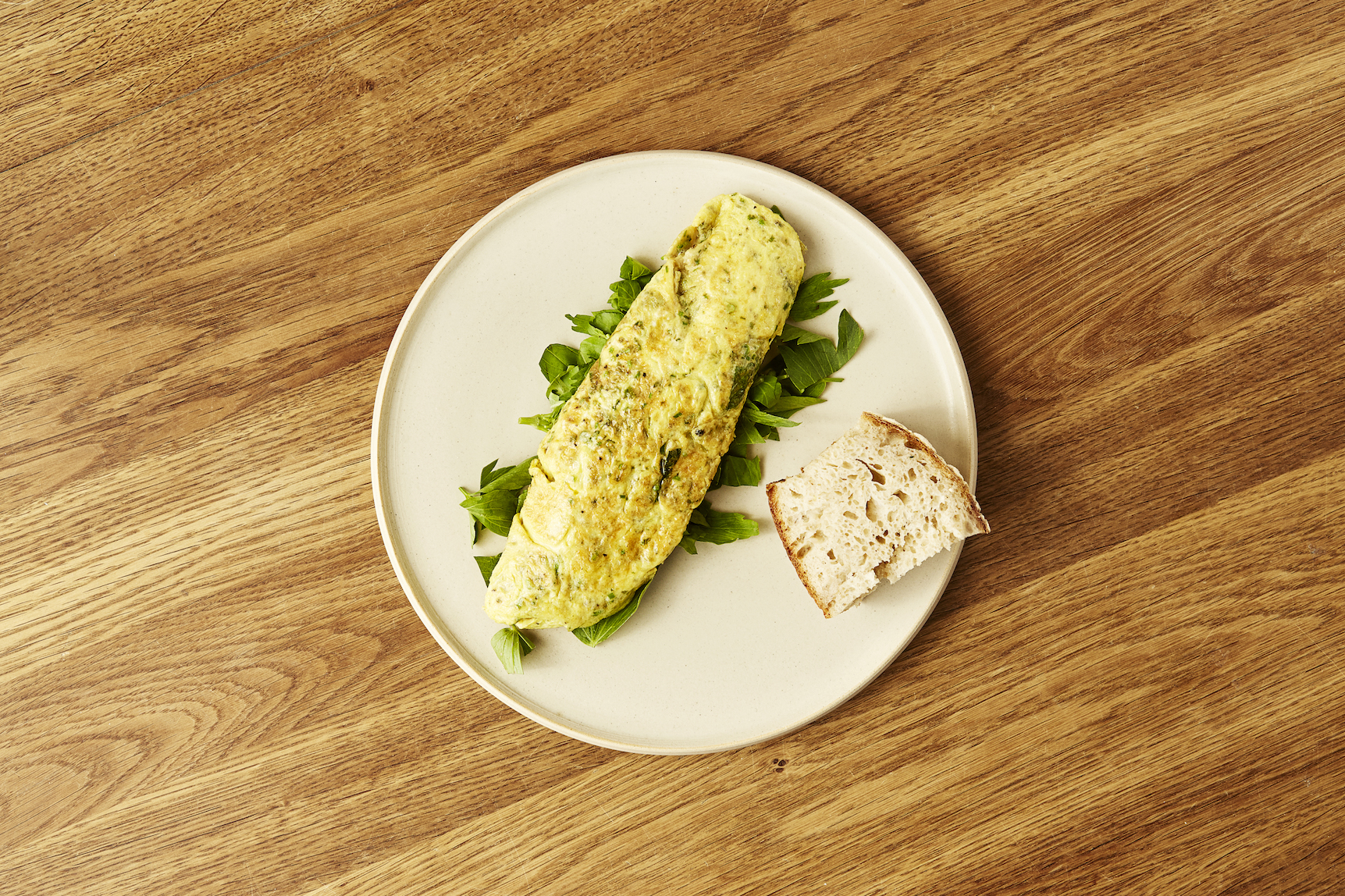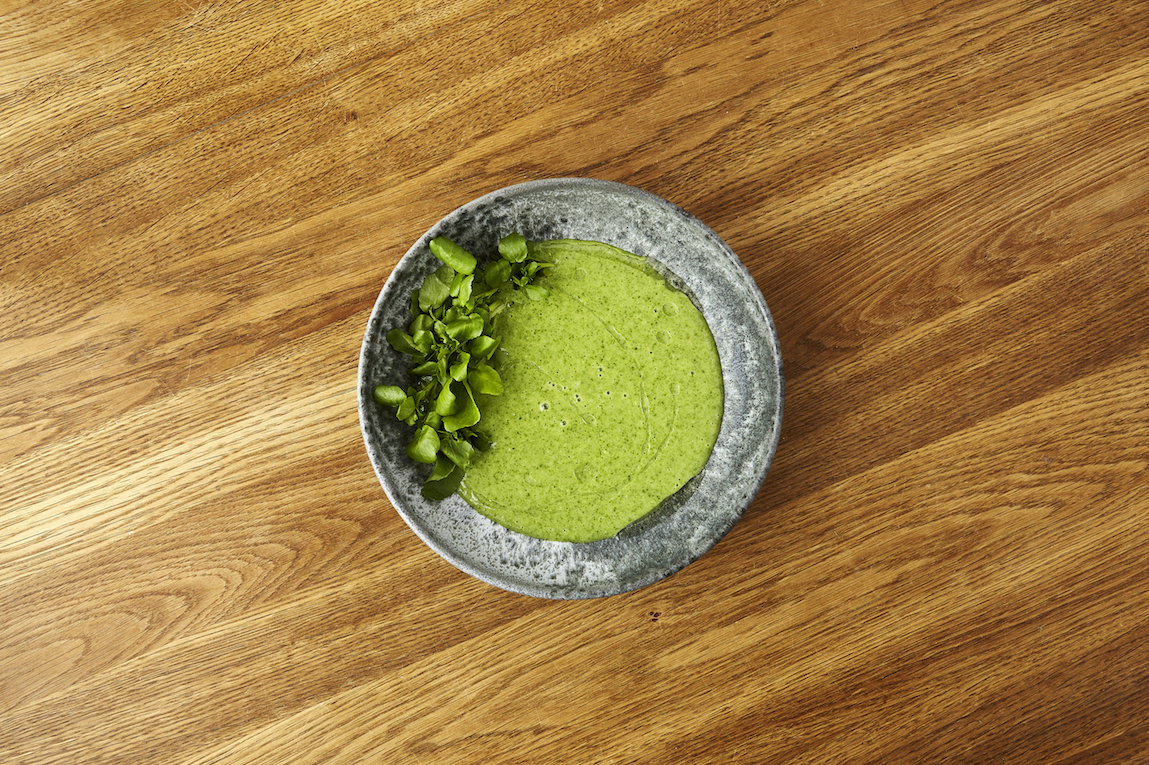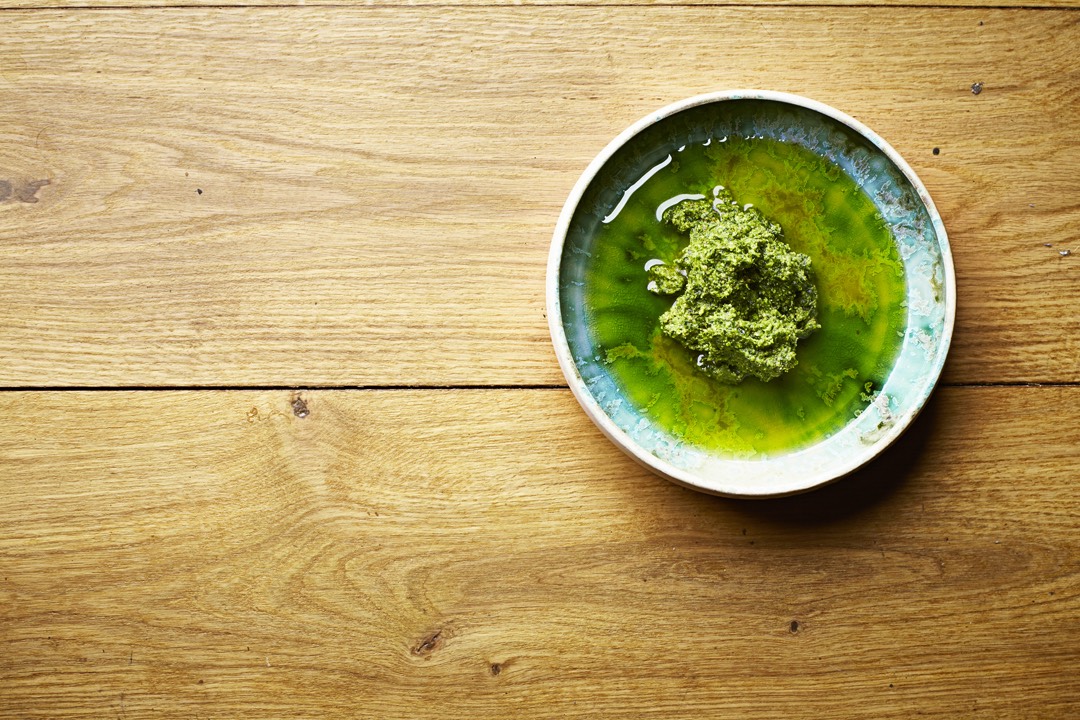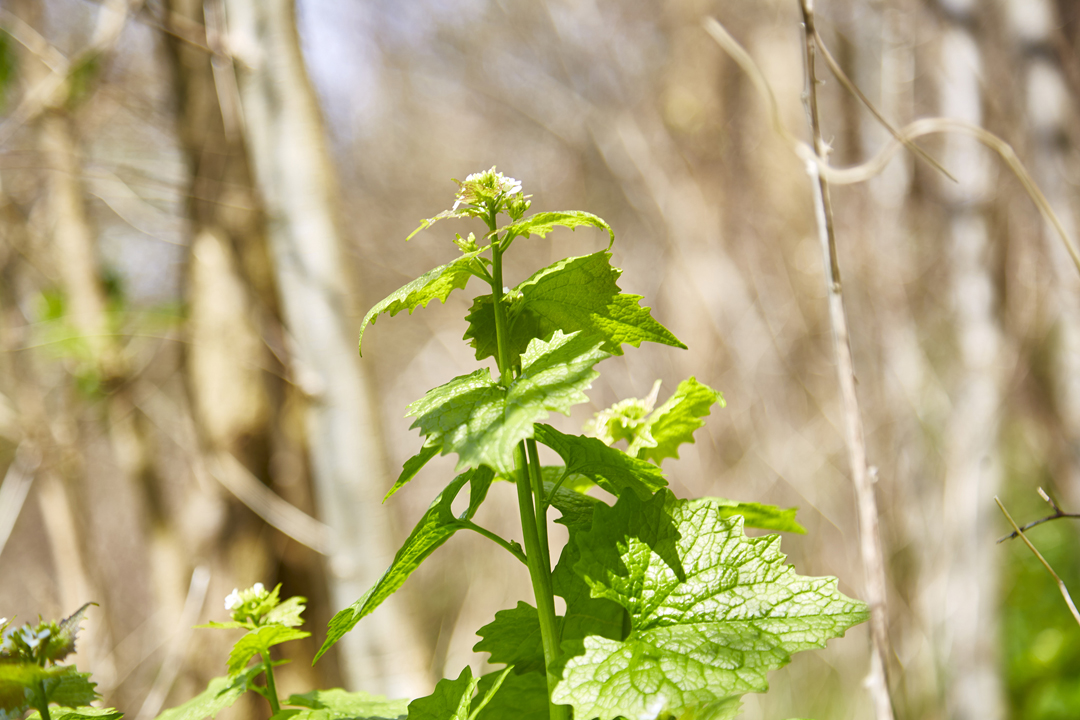
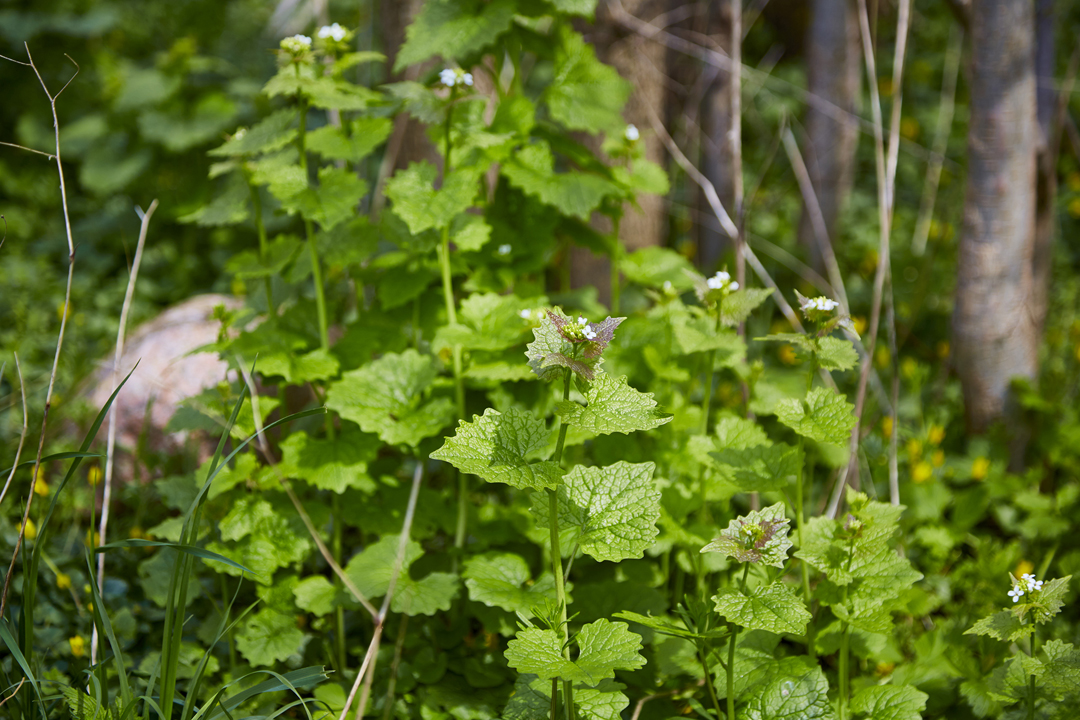
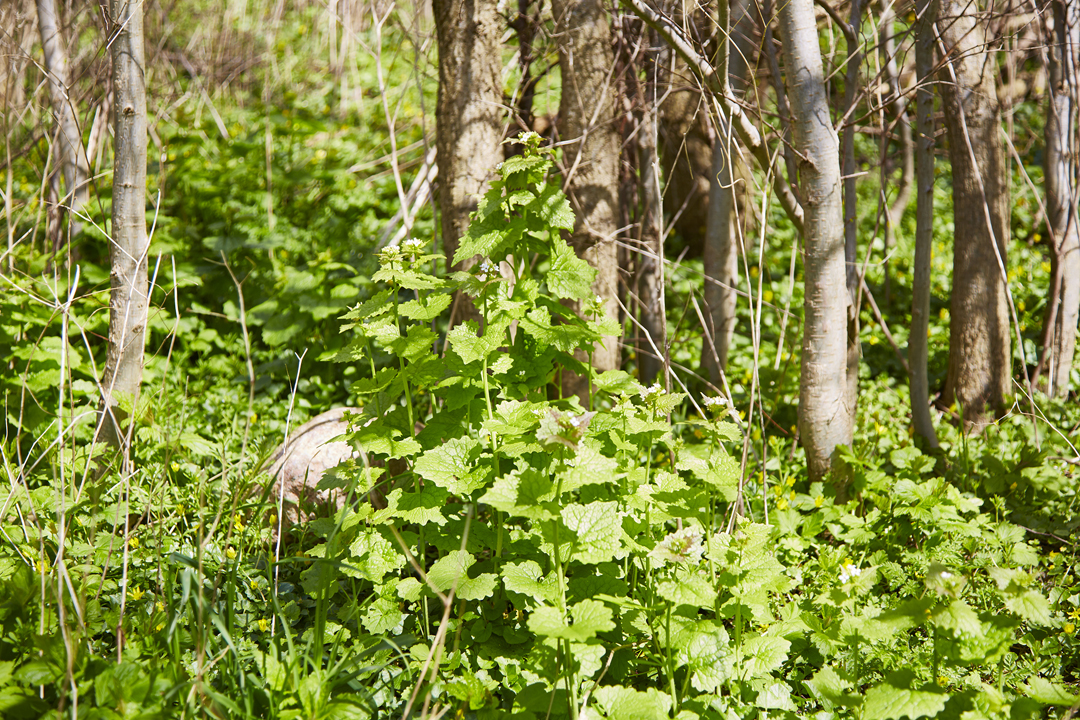
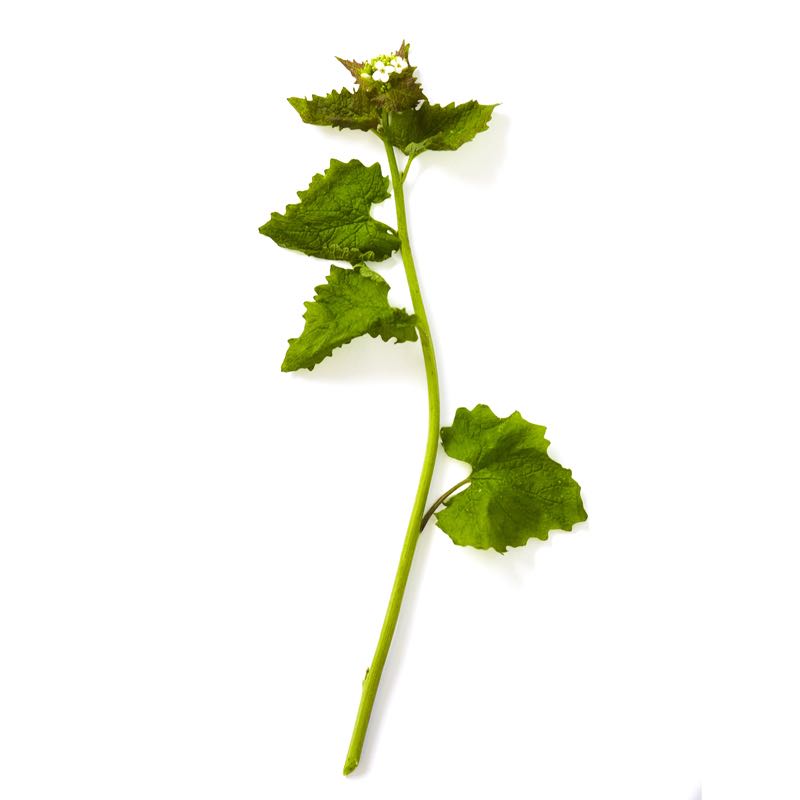
Garlic mustard
Garlic mustard grows aggressively enough to be a nuisance, but it’s also flavorful, easy to use in cooking, and always on hand in nature. It contains mustard oil, which stimulates the appetite.
-
Where to Find It
Garlic mustard can tolerate both full sun and shaded areas, and it's fairly common in many different kinds of landscapes. Check the edge of woods, forests, hedges, and grasslands, near mounds of seaweed, or shrubbery in parks or gardens. It can cover large areas and grows in characteristic belts of pale green with small, white flowers. You can follow your nose to find it, as it smells strongly of onions.
Salt marshes, beaches, deciduous forests, coniferous forests, towns, hedges, roadsides, grasslands.
-
When to Find It
You can pick the leaves from garlic mustard year round, but the best time to pick them is before it blooms and the leaves get too rough. It blooms from May until June.
Leaves: Year round. -
How to Spot It
Garlic mustard has a two-year life cycle, and its appearance changes from its first to second year of life. In the first year, it forms a small, matte green bunch of heart-shaped leaves with rough teeth all the way around their edges. The leaves are roughly notched around the edges, but their surface is smooth, and crossed with visible veins. In garlic mustard’s second year, it grows up a meter tall, develops flowers, and spreads its seeds. The leaves get more tapered and shaped like stinging nettles. It develops green seed pods and small, white flowers that grow in rounded bunches.
-
How to Pick It
When gathering garlic mustard, you can take the entire plant to use—seeds, flowers, and all. The leaves are best when they are young and bright green, and especially before the plant starts flowering. The best part of the stem of the two year-old plant is the top, where it hasn't gotten too rough. Like the bottom of asparagus, it has a spot where it will naturally break when you bend it back. Try to find this spot when you pick the stem. It can be difficult to collect enough of the seeds, so try gathering from several plants.
-
NB!
The Ministry of Environment and Food of Denmark recommend limited consumption. The plant contains acids that can convert into hydrocyanic acid.
Flowers and seeds: May, June.
Risk of misidentifying the plant
There is no risk of mistaking the plant for another dangerous or undesirable plant.


